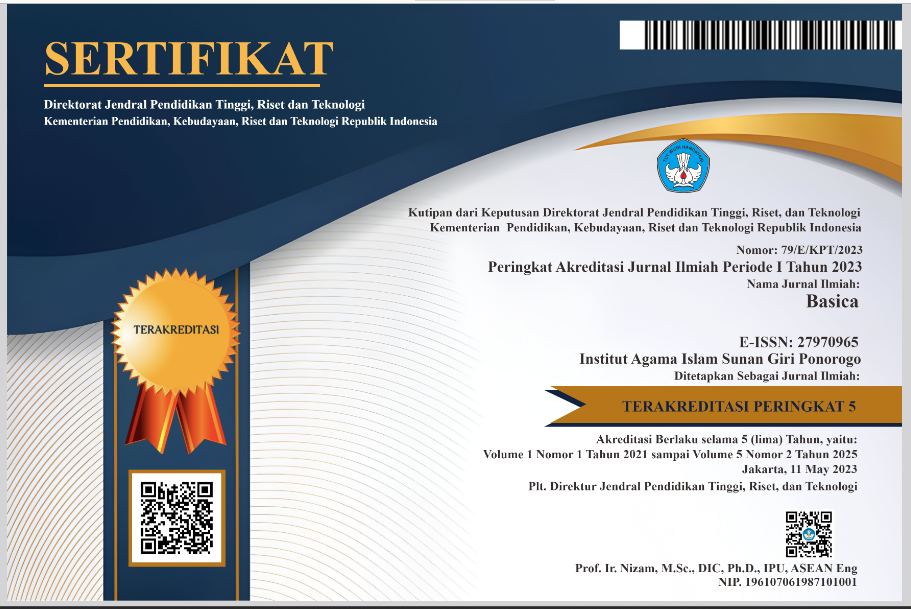Application of the drill method in islamic religious learning on short letter memorization material for the learning outcomes of class IV students at SDN Ploso V/176 Surabaya
Keywords:
Drill Method, Religious Learning, Memorisation of short surahsAbstract
Islamic religious learning is one of the most important parts of the entire existing educational process, one of the materials in Islamic religious learning is memorising short surahs using the drill method, student learning outcomes when memorising short surahs with the abilities that students have when implementing Islamic religious learning are still relatively weak. This is because many students lack interest in memorising and there are many students when learning Islam feel bored when the teacher explains the material of memorising short surahs. This is because many students lack interest in memorising and there are many students when learning Islam feel bored when the teacher explains the material of memorising short surahs. The purpose of this study was to evaluate learning outcomes in memorising short surahs of grade IV students of SDN PlosoV/176 Tambak Sari Surabaya using the drill method. The data collection technique used is observation as a form of observation, and a written test is conducted to measure the increase in student learning outcomes. The number of samples is 10 children of class IV students as the object of research. The results showed that the application of the drill method in learning Islamic religion can improve the ability to memorise short letters and learning outcomes in students of SDN Ploso V/176, Tambak Sari Sub-district, Surabaya City. This is evident from the learning completeness that continues to increase significantly from the implementation of actions in cycle I of 40.0% experienced a slight increase in cycle II of 60.0%.. And in cycle III research there was a fairly high increase of 80.0%. So that the conclusion in this study shows that the drill method can improve the learning outcomes of memorising short surahs in Islamic religious learning for fourth grade students of SDN Ploso V/176 Surabaya.
References
Hasbullah, H., Juhji, J., & Maksum, A. (2019). Teaching and learning strategies in an effort to improve learning outcomes in Islamic religious education. Edureligia: Journal of Islamic Religious Education, (1), 17-24.
Jailani, M. S. (2023). Data Collection Techniques and Scientific Educational Research Instruments in Qualitative and Quantitative Approaches. Ihsan Journal: Journal of Islamic Education, 1(2), 1-9.
Maghfuroh, S. (2016). The influence of the implementation of the drill method regarding the final results on learning Islamic religion, Al-Qur'an material in class V at SDN SendangRetno. IJRC: Indonesian Journal Of Religion Center, 1(1), 59-68.
Syafi'I, A., Marfiyanto, T., & Rodiyah, S. K. (2018). Study of Student Learning Achievement in Various Aspects and Influencing Factors. Journal of Educational Communication, 2(2), 115-123.
Zakiyah, L. M. (2017). Islamic Religious Education Teachers' Efforts to Improve Student Learning Achievement Through the Madrasah Diniyah Program at MI Mujahidin Jatimulyo Kepung Kediri
Published
How to Cite
Issue
Section
License
Copyright (c) 2025 Aldi Dimas Fadlulloh

This work is licensed under a Creative Commons Attribution-NonCommercial 4.0 International License.






